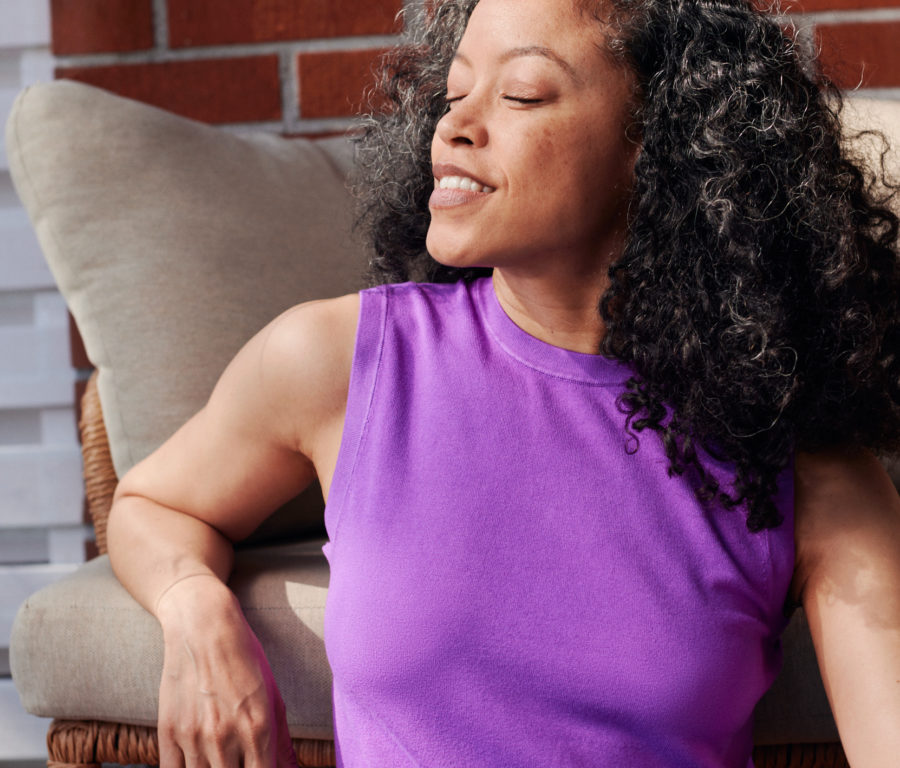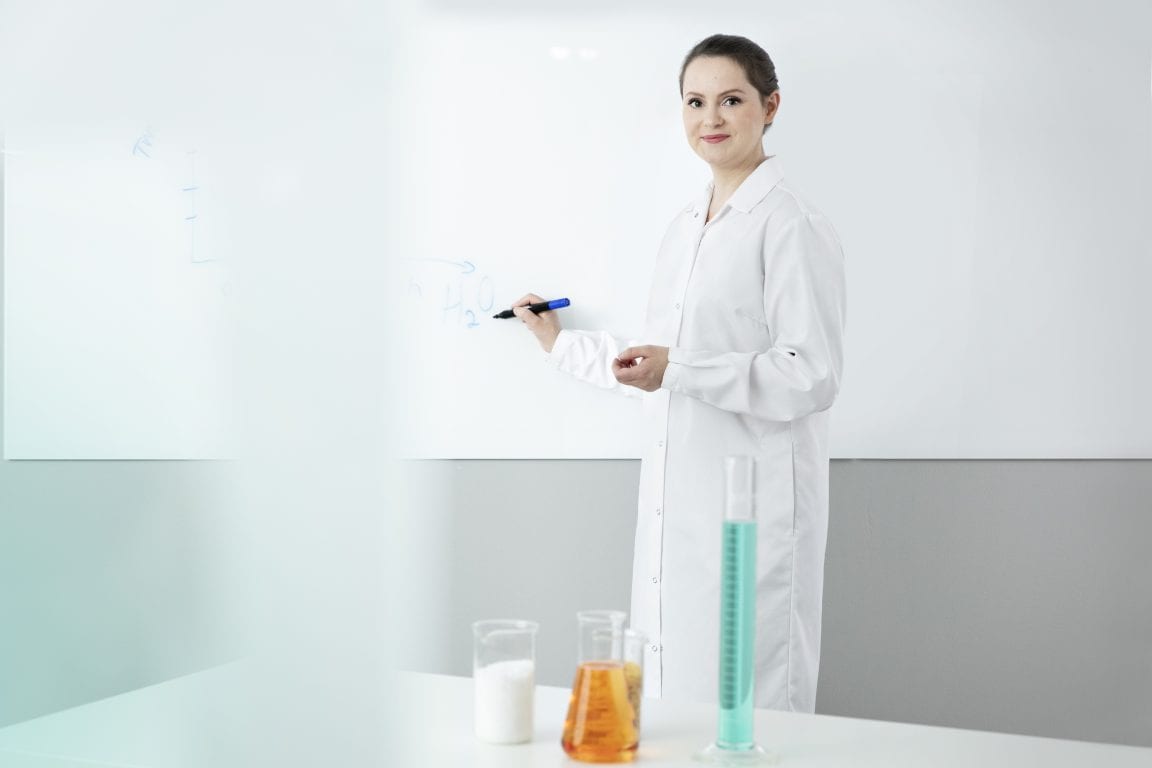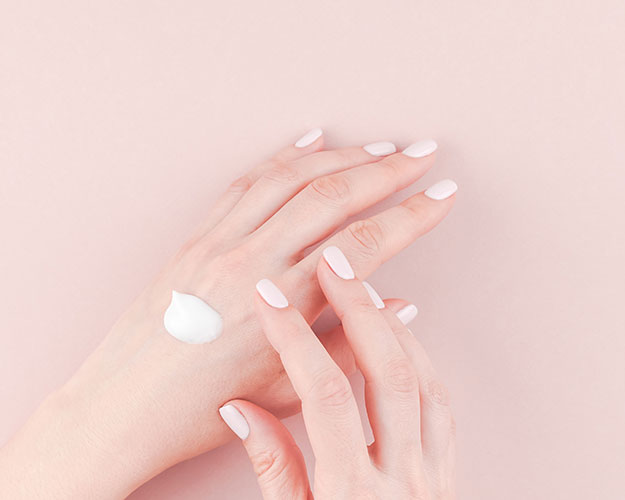Sun care products for sensitive skin are made of ingredients as mild as possible
A good UV-sunscreen does not cause allergies

Sun care products for sensitive skin are made of ingredients as mild as possible
A good UV-sunscreen does not cause allergies

Are you wondering about what exactly is in your sun care product? Our product manager for LV-products, Outi Tarakkamäki tells us how LV is developing suitable sun care products for people with sensitive skin, and how the products are tested, and what to consider when selecting a sunscreen.

1. What does your team consider when developing sun care products for people with sensitive skin?
We select as mild ingredients as possible for our products. For example, when choosing preservatives, we only accept those that don’t irritate sensitive skin. When selecting UV-filters, we are also careful, that they are not sensitizing in any way. In general and throughout our production, we only use carefully researched agents that are accepted within the EU.
When it comes to products for sensitive skin the entire product is important – each and every component of the product needs to be as mild as possible. Although we sometimes add antioxidants and calming agents to our products, we still have to be very careful, as using for example vitamin E could cause irritation for some users. This is why we don’t use scents in our products at all.

2. How do you develop and test sun care products for sensitive skin?
We work together with the Finnish Allergy, Skin and Asthma Federation, and we follow their recommendations. We never use extracts that the federation does not approve of, and we don’t add colourants or perfumes.
The Allergy, Skin and Asthma Federation checks all the raw materials we use, their concentration and composition, and further investigates samples from our products. This co-operation with the federation works fantastically well, and we further develop and fine-tune the products together. In case we find out that a raw material isn’t suitable, we instantly change its composition.
We also perform UVA, UVB and water resistance testing on our sunscreens in accordance standardised methods in third party research centres in Europe, in most cases in Germany and France. We also investigate ourselves how well a product is suited for sensitive skin. For any products aimed for the face we also do eye-irritation testing, which are carried out as tube testing.

3. According to the Allergy, Skin and Asthma federation oxibentsone and octocrylene, which are UV-filters, could cause allergy symptoms. Some studies show that octyl methoxyzinnamate make the colours fade on sea corals. What sort of UV filters does LV products contain?
Many are wondering about what connection there is between chemical UV filters and allergy symptoms, environmental problems and hormone disruptions. It is good that people show an interest in what raw materials the products contain.
We use chemical UV filters that are selected especially to suit sensitive skin. They don’t cause allergies or contain agents that are suspected to cause hormone disruptions nor are they suspected to pose risks for the environment.
The agents we use are:
- Ethylhexyl triazone (EHT, Octyltriazone), that protects the skin from the damage of UVB radiation from the sun.
- Bis-ethylhexyloxyphenol methoxyphenyl triazine (BEMT, Bemotrizinol). This protects the skin from both UVA and UVA radiation from the sun.
- Diethylamino hydroxybenzoyl hexyl benzoate (DHHB). This protects the skin from UVA radiation.
- Diethylhexyl butamido triazone (DBT, Iscotrizinol). Also, this one protects from both UVA and UVB radiation.
Chemical UV filters transform the damaging sun rays into harmless heat. The benefit with these is that they are easy to apply and have a pleasant texture, avoiding creating a white film on the face, even if the sun factor would be 50. On our website you will find detailed lists of components that explain for what purpose a certain ingredient is required.
In case you are concerned about the ingredients it is also good to remember that sunscreens sold within the EU are only allowed to contain tested and approved ingredients.
We want to remind everyone to care for the water system. By showering before swimming, you wash off most of the product before entering the water. However, always remember to add more sunscreen after you are done and out of the water!
4. What should someone with sensitive skin remember when selecting a sun care product?
If you are able to use products with scents, there’s more variety to choose from. On the other hand, if you are sensitive to scents, you are best off choosing an odourless product. Products approved by the Allergy, Skin and Asthma Federation are usually suitable for those that are allergic to extracts. Those allergic to preservatives should still separately check all the ingredients by using the INCI-list, that tells you more about the ingredients in cosmetics.
In case the sunscreen doesn’t seem to suit you, or cause spots, it is worthwhile to just boldly change brand and research what filters and preservatives the products contain. You can use e.g. the Allergiaportaali to find suitable products and check INCI labelling.
5. Sunscreens can leave a scent on clothes or stain them. Can you avoid the clothes from picking up a scent by using odourless products?
Not necessarily, which is unfortunate. Sunscreens often have a smell which is characteristic to them, and you can’t really get rid of it. You can try to avoid staining your clothes by spreading the sunscreen well in advance before you get dressed, so that the cream or lotion is well absorbed into the skin. The scent can luckily in most cases be washed away, but you should use a stain remover to make sure the stains come off. Vinegar also removes odours effectively, just add it to your rinse water.
As a very last resort, if the stains just won’t come off, and you are about to throw away something, you can try washing it in 90 degrees or place it in some boiling water. However, this might seriously damage the fabric itself. Therefore, the absolutely best option is to always wash off any stains immediately.
With the LV-products you protect your skin effectively from the damaging UVA and UVB rays. Our odourless products are without colourants and they are easy to apply and fast to dry while still hydrating the skin. All our products are suited for the entire family. We are careful when selecting the UVA and UVB filters, as we want to make sure they aren’t sensitising. We only use carefully researched components that are approved in the EU.